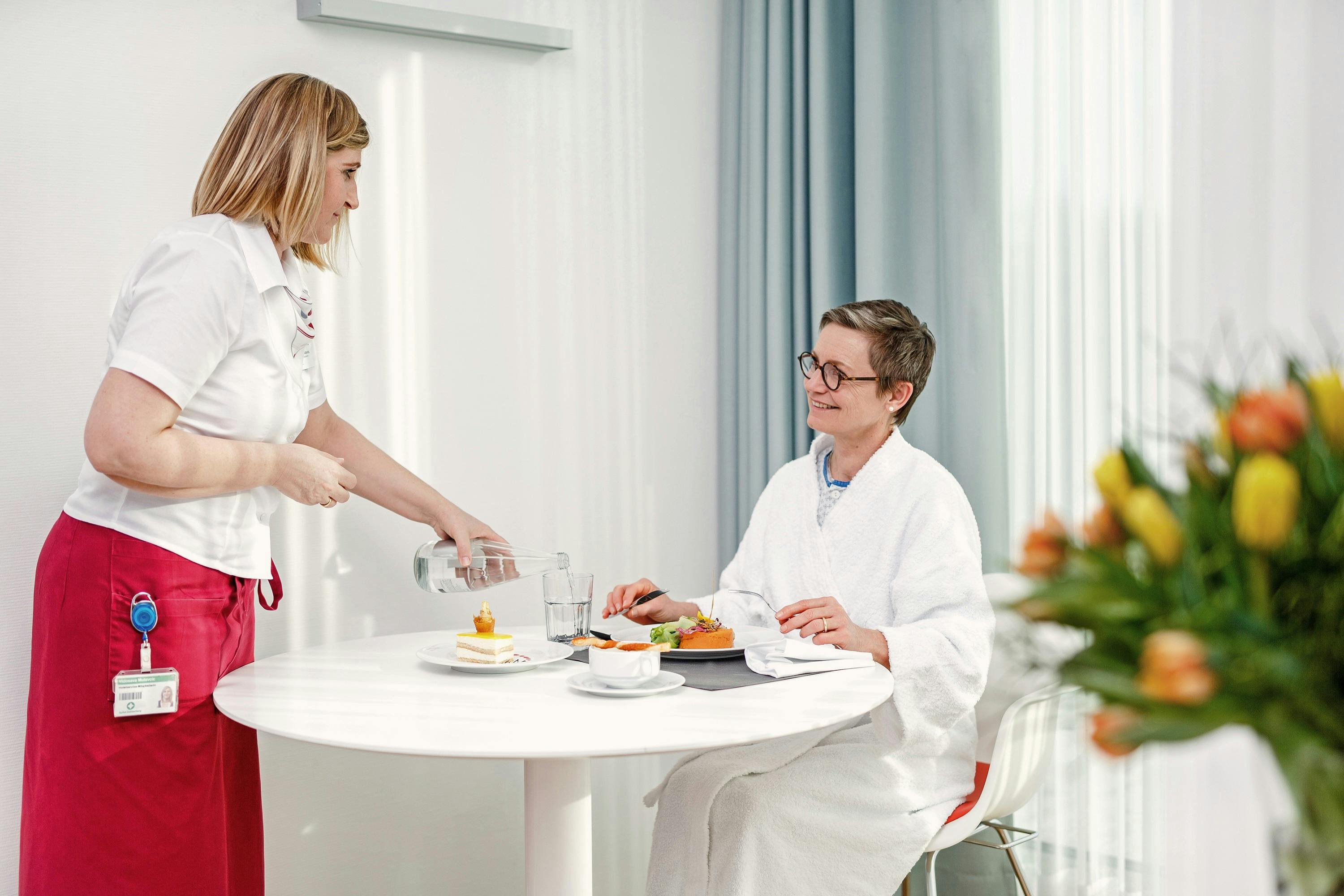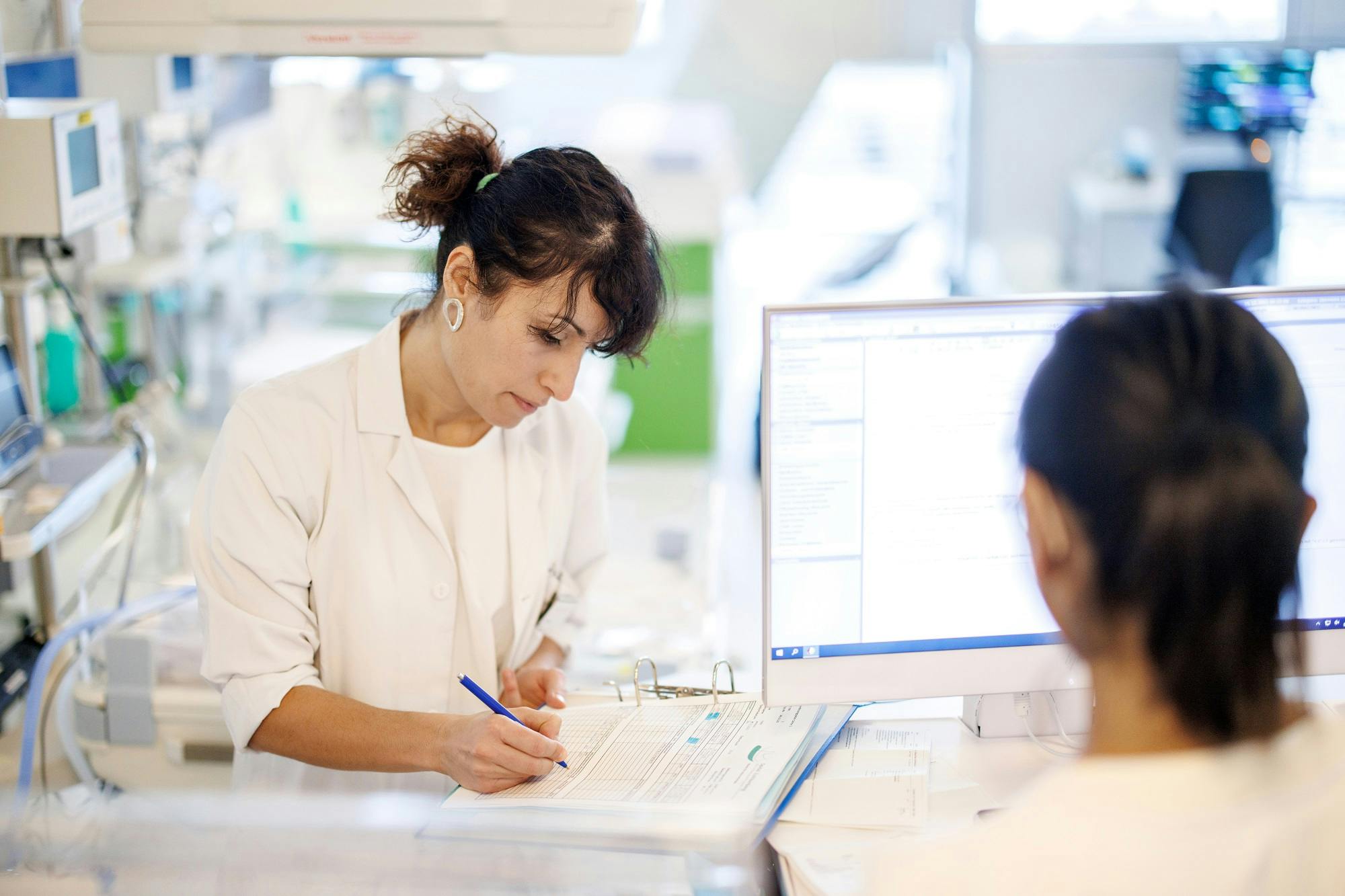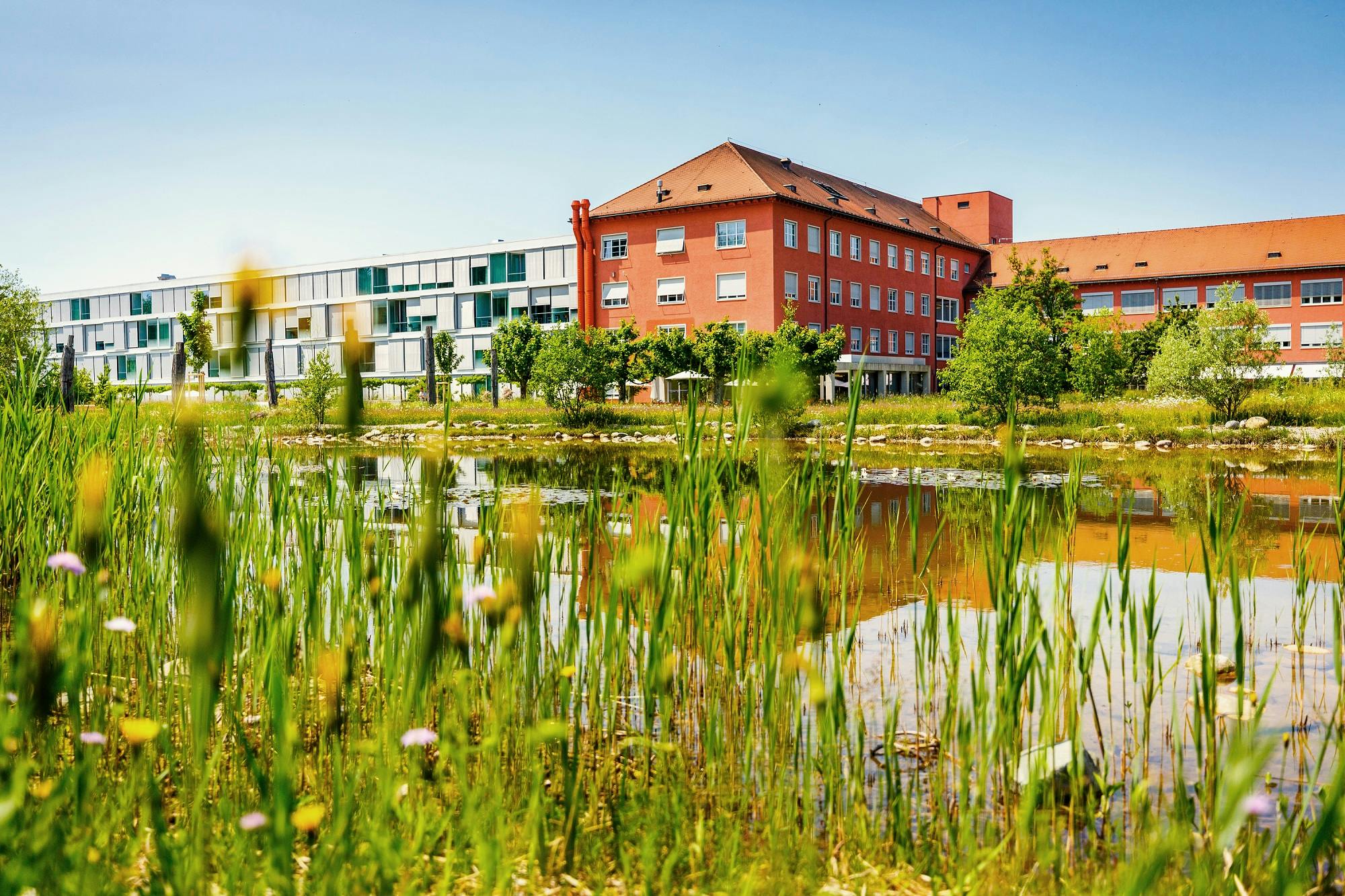The intensive care unit at Zollikerberg Hospital - lots of high-tech in a surprisingly quiet atmosphere
Dr. med. Lars Jansen
July 25, 2023
8 min
I imagine an intensive care unit to be a noisy, hectic and sad place. What is it really like?
I see our intensive care unit as a mostly quiet place where things are organised. Of course, there are unforeseen situations in which a certain dynamic arises. We are trained for that. Such situations also motivate us to function well as a team and to help our patients in critical condition quickly and appropriately. Our intensive care unit is very bright and friendly. Of the seven beds we operate, six are close to a window. The windows extend from the ceiling to the floor. We also have islands of light in the other areas of the intensive care unit. We keep hearing from patients and relatives that there is a lovely atmosphere. Patients who come back months after being discharged also often give us very positive feedback.
0/0
Why do you work in the intensive care unit? What fascinates you about it?
I am a specialist in anaesthesia and intensive care medicine and have been head of the intensive care unit for almost five years. Anaesthesia and intensive care medicine is a very dynamic subject, you can quickly find yourself in unforeseen situations. Teamwork is at the forefront. Communication with each other is extremely important, as is a good team spirit. I find my work very varied and diverse - a privilege. It is also very satisfying to help people in a current illness situation, to alleviate pain and anxiety. Patients usually stay with us for several days or even weeks. They usually suffer from complex illnesses. I really appreciate the continuity in patient care and the close contact with relatives. The interventional side is also exciting. For example, airway management with ventilation therapy including tracheotomies, i.e. tracheotomies for long-term ventilated patients, various catheter systems in blood vessels for the continuous administration of medication and also continuous blood pressure measurement or the insertion of dialysis catheters. Yes, that's what's so fascinating.
Last but not least, I always appreciate the interdisciplinary work with the other departments and specialist colleagues. This exchange is exciting. It is meaningful to work in a system-relevant area. As an intensive care unit within Zollikerberg Hospital, we ensure that complex, cross-departmental situations, such as emergency situations, can be dealt with.
That sounds very varied. Are there moments when you reach your limits?
Of course there are. The last two or three years with coronavirus have been particularly challenging for me personally. Patients usually come to us when they are in an acutely poor condition and cannot be contacted. When they get better, they are quickly transferred back. In the case of coronavirus patients, it was often the case that they were fully present. You got to know them, including their sense of humour, and chatted to them. Then their condition deteriorated, perhaps over a period of days or weeks. Some of them didn't make it. These experiences were really difficult for the whole team. Through discussions and ethical case discussions in the team, especially with the nursing staff involved, we were able to work through these, which helped us all.
0/0
I imagine planning in your area is very difficult. Some relocations can be planned, others cannot. How do you do that?
On the one hand, there is the daily routine with morning reports and ward rounds, followed by planned interventions such as catheter changes or transfers to radiology for further diagnostics. During the daily routine, an emergency can of course be announced at any time, be it in the shock room, an ambulance arriving, a resuscitation from the ward or someone who suddenly becomes unstable. Then we have to interrupt our routine. The patient arrives in the intensive care unit, is quickly transferred to an IPS bed, monitored, the circulation stabilised, a catheter inserted, medication administered and, if necessary, intubated in an emergency. We can switch from routine to emergency very quickly. That's what we're trained to do. That's the exciting thing about our work: you always have to be ready for a change in the situation. That's what intensive care medicine is all about. Here you have to work perfectly as a team, one wheel meshes with the next.
Where do patients come to the intensive care unit from?
We are systemically relevant for the hospital and take patients from emergencies and the shock room if they are at risk of death. We are also an important partner for the surgical disciplines, for example after major abdominal surgery, spinal surgery, hip surgery or other orthopaedic procedures. Patients from medical subspecialities also come to us, whether from cardiology, gastroenterology, pneumology or other subdisciplines. We cushion emergency situations in-house, for example as a backup for the operating theatre if post-operative ventilation is required. Last but not least, women come to us after gynaecological procedures - and very rarely people after urological procedures. We also accept external patients from other intensive care units. On average, our patients are 65 years old.
0/0
Which devices can be found at every intensive care bed? And which ones can be mobilised?
Each bed has electricity and light, compressed air and oxygen. We also have fixed monitoring and a perfusor syringe pump at the bedside. This is a pump that continuously injects the contents of a 50 ml syringe into a vein via a thin plastic line. It is used, among other things, to relieve pain or for permanent anaesthesia.
A mobile ventilator can be connected at any time. There is also an emergency trolley. We also have a mobile ultrasound machine so that we can look at the heart or the organs in the abdomen on the ward, for example. The ultrasound machine also has an ultrasound head especially for vascular punctures. Of course, we also have an X-ray machine that can be used as a mobile unit. We also have a defibrillator and a mechanical resuscitation device if someone needs to be resuscitated for several minutes. This system for external chest compressions is strapped around the chest like a belt and then presses rhythmically on the sternum to maintain minimal circulation. This gives us time to find out how we can help the patient.
What is the difference between an intensive care bed and a normal bed?
Basically, intensive care beds are equipped with many additional functions. The mattress is designed to protect against pressure sores. It is softer and more comfortable. The bed can be tilted in all directions, even sideways, if a patient needs to be mobilised. This also allows staff to work in a way that is as back-friendly as possible. We recently replaced all the beds. The new ones have a kind of remote control. Patients on duty can use it to adjust their beds so that they are comfortable at all times. It is also a relief for the staff, as they no longer have to push the beds completely, for example when transporting them to radiology, but can control them using the remote control.
As a patient in the intensive care unit, you are at their mercy. What do you do to protect their privacy as much as possible?
The term "at the mercy" bothers me. Our patients are temporarily in need of help in the care of other people, in our case highly trained medical staff. To protect them, we use single rooms where possible. If this is not possible, we have mobile partitions. If medically justifiable, we close the door to the patient's bunk. We also make sure that we talk quietly and measure the volume in the rooms. To do this, we have an "attentive ear" hanging in various places, which measures the decibels. If certain values are exceeded, we are notified. In this way, we want to ensure that patients feel disturbed as little as possible and can orientate themselves well.
It is also very important to comply with the visitor regulations so that people are not constantly passing through. Confidence-building measures are particularly important in the nursing area. For example, washing and intimate care is carried out by female staff for female patients and by male staff for male patients. This is also discussed with the patient beforehand.
What clinical pictures do you often see in the intensive care unit?
In the medical department, we treat many cases of pneumonia, which can also lead to lung failure. Ventilation is then necessary. Kidney failure is also common. In the cardiological field, there are cardiac arrhythmias, sometimes with a pumping weakness of the heart. We also often treat patients with what is commonly known as "blood poisoning", i.e. septicaemia or septic shock. In older patients, we often see delirium, i.e. acute confusion and restlessness. From the surgical disciplines, we monitor patients after major operations, for example on the spine. Intestinal obstructions also occur more frequently here. Heavy haemorrhaging after births is rare.
Patients with psychiatric illnesses should not be forgotten. This is particularly the case if the person being cared for has a worsening mental illness or has a medical problem in addition to their mental illness. We are then challenged as a team and have to be broadly positioned accordingly.
What role do relatives play in the recovery process? How do you involve relatives?
Relatives are very important for the recovery process, especially if the patient is unable to express themselves. Intensive medical treatment may only be carried out if the patient or the legally authorised relatives agree to it and if the entire treatment makes medical sense. The doctors decide on the latter. However, if the patient's wishes are not clear because they are unable to express themselves, we try to call in the next of kin within 24 hours, inform them and ascertain the patient's wishes. Sometimes there is also a living will and we are always in close contact with the family doctor. Caring for relatives is also an important part of nursing care. Friendliness, helpfulness and round-the-clock availability - this is the only way to create a healthy relationship. For us as the treating team, it goes without saying that we look after the relatives, who are often overwhelmed by the situation. We also offer psychological support, for example through nursing care, but also in cooperation with pastoral care or social services.
0/0
0/0
Weitere Beiträge
Backstage
A heartfelt commitment to the kidney
The journey to the dialysis centre is one that patients with chronic kidney failure make several times a week, usually for the rest of their lives. At Zollikerberg Hospital, they are accompanied by Esther Karlen, who has been working as a qualified nurse on the dialysis ward since 2015. In this article, she explains how she supports the patients on the ward not only from a professional but also from an emotional perspective.
Backstage
Step by step: a virtual journey through Zollikerberg Hospital
Would you like to get to know Zollikerberg Hospital without leaving your home? Our 360° virtual tour offers you a comprehensive visual insight into our facility and the surrounding park - from the comfort of any location. Immerse yourself in the world of Zollikerberg Hospital and discover modern facilities and inviting surroundings that are waiting to be explored by you.
Backstage
An insight into work in the intensive care unit


